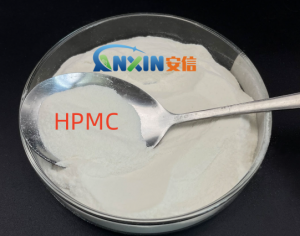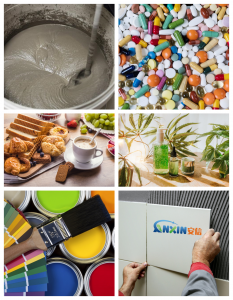Hydroxypropyl methylcellulose (HPMC) is a nonionic cellulose ether made from natural high-molecular-weight cellulose through chemical modification. Its excellent thickening, film-forming, bonding, emulsifying, water-retention, and suspension properties make it highly valuable in a wide range of applications, including construction, pharmaceuticals, food, cosmetics, and coatings. HPMC is not only a multifunctional additive but also a key technological vehicle for improving the performance of modern materials.
1. Value in the Construction Industry
HPMC is primarily used in building materials such as tile adhesives, putty powders, mortars, and gypsum products. Its water retention is a key advantage, preventing rapid evaporation and ensuring adequate cement hydration, thereby improving bond strength and application time. Furthermore, HPMC’s thickening and rheology-modifying properties improve the workability of mortars, imparting excellent thixotropy and anti-slip properties, thereby enhancing application efficiency and final product quality. In systems such as self-leveling mortars and thermal insulation mortars, it also enhances stability and crack resistance, making it an indispensable functional additive in modern construction.
2. Value in the Pharmaceutical Industry
Pharmaceutical-grade HPMC is widely used in tablets, capsules, eye drops, and sustained-release and controlled-release formulations. It is highly safe, non-toxic, and non-irritating, meeting pharmacopoeial standards. In tablets, HPMC can serve as a film-forming agent, binder, and disintegrant, effectively improving drug appearance and release properties. In sustained-release and controlled-release formulations, HPMC’s swelling properties can control drug release rate, prolong drug efficacy, and enhance patient compliance. Furthermore, HPMC can be used as a coating material and suspending agent in liquid formulations and capsule shells, making it a crucial polymer excipient in pharmaceutical formulation engineering.
3. Value in the Food Industry
Food-grade HPMC exhibits excellent thermal gelation, emulsification, and stability, making it commonly used in baked goods, dairy products, vegetarian products, and frozen foods. It forms a stable colloid during heating, enhancing food texture and mouthfeel. For example, in bread and cakes, HPMC improves bulk and moisture retention. In vegetarian sausages and plant-based meats, it acts as a molding agent and fat replacer, imparting an ideal chewiness and thermal stability. Furthermore, HPMC’s low-calorie and animal-free properties align with the growing trend toward healthy and sustainable foods.
4. Value in Daily Chemicals
HPMC exhibits excellent thickening, emulsifying, and stabilizing properties in daily chemical products such as shampoo, skin cream, and toothpaste. It effectively increases system viscosity, resulting in a smooth and uniform product texture and forms a gentle protective film on the skin or hair, enhancing the user experience. HPMC also exhibits excellent compatibility with other surfactants, preventing stratification and water extraction, thereby extending product shelf life. In high-end skincare products, it also serves as a natural-sense stabilizer, enhancing the environmental friendliness and mildness of the formulation.
5. Value in Coatings and Inks
HPMC provides thickening, leveling, film-forming, and anti-sagging properties in water-based coatings. It improves pigment dispersion and system stability, resulting in smoother application and a denser, more uniform film. Furthermore, HPMC’s film-forming properties enhance coating washability and adhesion, reducing chalking. In inks, it improves ink flow and drying speed, ensuring print clarity, making it a crucial component of green and environmentally friendly additives.
6. Value in Other Industries
In addition to the aforementioned key industries, HPMC also plays a vital role in agriculture, textiles, ceramics, and electronics. In agriculture, it serves as a seed coating agent and water-retaining agent, improving soil moisture and seed germination rate. In ceramics, it acts as a molding aid and binder, enhancing green body strength and molding precision. In the electronics industry, HPMC is used as a binder in insulating coatings and slurries, ensuring material stability and uniformity.
With its multifunctional, renewable, and environmentally friendly properties, HPMC demonstrates irreplaceable comprehensive value across a wide range of industries. From traditional construction to high-end pharmaceuticals, from food processing to precision manufacturing, HPMC is not only a key additive for performance improvement but also a key representative of green and sustainable material technology. With increasingly stringent environmental regulations and growing market demand for high-performance materials, HPMC’s applications will continue to expand, and its technical and economic value will continue to rise.
Post time: Oct-21-2025

